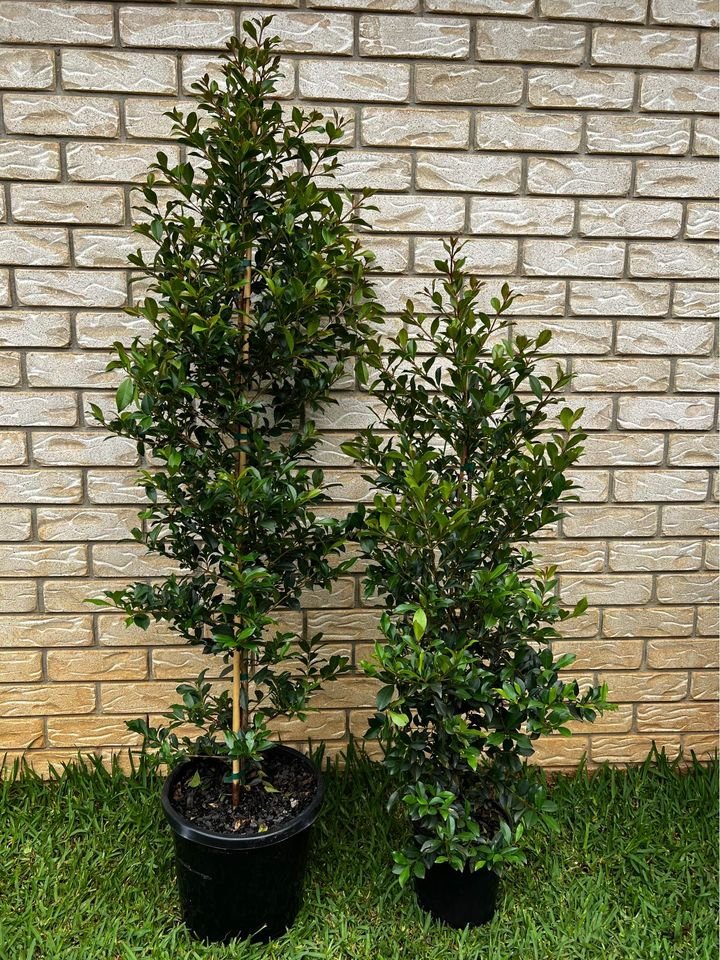Why Native Trees Excel in Brisbane Gardens
Brisbane's subtropical climate presents unique challenges for gardeners, with hot summers, occasional dry spells, and periods of intense rainfall. Native trees have evolved to thrive in these precise conditions, making them ideal choices for local gardens. Their deep root systems help them withstand both drought and heavy rain events, while their natural resistance to local pests reduces maintenance requirements.
Furthermore, native trees support local biodiversity by providing food and shelter for native birds, insects, and small mammals. This creates a vibrant, living privacy screen that enhances your property's ecological value while serving its practical purpose.
Selecting the Right Native Tree for Privacy
When choosing native trees for privacy screening, consider these essential factors:
Growth Rate and Mature Size
Different species grow at varying rates and reach different mature heights. Fast-growing species like Lilly Pilly can provide privacy relatively quickly, while slower-growing options often develop denser foliage. Consider your timeline and space constraints when selecting species.
Light Requirements
Assess your garden's sun exposure before selecting trees. While many native species tolerate full sun, some prefer filtered light or partial shade. Understanding your garden's light patterns ensures successful establishment and growth.
Soil Type and Drainage
Brisbane's soils vary significantly across suburbs. Most native trees adapt well to local soil conditions, but it's worth knowing your soil type. Sandy soils drain quickly and may need more frequent watering, while clay soils retain moisture but might require improved drainage.
Top Native Trees for Brisbane Privacy Screens
1. Lilly Pilly (Syzygium species)
- Mature height: 3-8 metres (depending on variety)
- Growth rate: Fast to moderate
- Features: Dense evergreen foliage, seasonal red new growth
- Best for: Year-round privacy, formal hedging
2. Fraser Island Apple (Acronychia imperforata)
- Mature height: 5-10 metres with spread of 3-6 metres depending on climate
- Growth rate: Moderate to fast
- Recommended spacing: 2-4 metres apart
- Features: Dense, glossy foliage and compact growth habit
- Best for: Natural screening and wildlife habitat
3. Grey Myrtle/Cinnamon Myrtle (Backhousia myrtifolia)
- Mature height: 3-6 metres with spread of 2-4 metres
- Growth rate: Moderate
- Recommended spacing: 1-2 metres apart for hedge/screen
- Features: Aromatic foliage, attractive flowers
- Best for: Fragrant privacy screens and formal hedging
Optimal Positioning for Privacy Trees
Strategic placement maximises privacy while considering practical aspects:
Distance from Structures
Plant trees at least half their mature canopy width from buildings and property boundaries. This allows for proper root development and reduces potential conflicts with foundations or neighbouring properties.
Spacing Between Trees
For optimal privacy screening, space trees according to their mature width. As a general rule:
- Small trees (3-4m wide): Plant 1.5-2m apart
- Medium trees (4-6m wide): Plant 2-3m apart
- Large trees (6m+ wide): Plant 3-4m apart
Maintenance and Care Tips
Native trees generally require less maintenance than exotic species, but proper care ensures optimal growth:
Establishment Period (First 12 Months)
- Water deeply 2-3 times per week during summer
- Apply organic mulch to retain moisture and suppress weeds
- Install stakes if needed, removing them after 12 months
Long-term Care
- Prune annually to maintain desired shape and size
- Monitor for signs of pest issues or nutrient deficiencies
- Refresh mulch annually, keeping it away from tree trunks
While native trees are generally low-maintenance, a structured care approach ensures optimal growth and longevity. Understanding seasonal requirements and implementing preventive care measures will help establish a robust privacy screen.
Monthly Care Calendar
Spring (September-November)
- Conduct major pruning before new growth surge
- Apply slow-release native plant fertilizer
- Check irrigation systems before summer
- Monitor for early signs of pests or disease
- Add fresh layer of mulch if needed
Summer (December-February)
- Increase watering frequency during extreme heat
- Perform light pruning to maintain shape
- Monitor soil moisture levels weekly
- Check for storm damage after severe weather
- Remove any damaged or diseased branches promptly
Autumn (March-May)
- Reduce watering as temperatures decrease
- Clean up fallen leaves and debris
- Check mulch depth and replenish if necessary
- Plan for winter maintenance tasks
- Assess overall tree health and structure
Winter (June-August)
- Minimize watering unless during dry spells
- Conduct structural pruning if needed
- Review and maintain drainage systems
- Plan for spring fertilization
- Address any soil compaction issues
Troubleshooting Common Issues
Prevention and early intervention are key to maintaining healthy privacy screens:
Leaf Yellowing:
- Check soil pH levels
- Assess drainage conditions
- Review fertilizer application history
- Consider micronutrient deficiencies
Growth Problems:
- Evaluate sunlight exposure
- Check root zone competition
- Assess soil compaction
- Review watering practices
Pest Management:
- Implement regular monitoring
- Encourage beneficial insects
- Use physical barriers when necessary
- Consider biological controls before chemicals
Seasonal Considerations
Summer Care
Brisbane's summers can be challenging for newly planted trees. Establish your privacy screen in spring or autumn to allow root systems to develop before extreme heat arrives. Once established, native trees provide valuable shade that can reduce your home's cooling costs.
Winter Planning
While most native privacy trees are evergreen, winter is an ideal time for planning and preparation. The cooler months present perfect conditions for soil improvement and installation of irrigation systems before spring planting.
Conclusion
Creating privacy with native trees offers Brisbane gardeners a sustainable, low-maintenance solution that enhances both property value and environmental benefits. By selecting appropriate species and following proper planting and care guidelines, you can establish a beautiful, natural privacy screen that will thrive for years to come.
Ready to start your privacy screening project? Our qualified horticulturists can provide personalised advice on the best native tree selections for your specific situation. Contact us for expert guidance or browse our extensive collection of premium-quality native trees, delivered directly to your door across Southeast Queensland.














